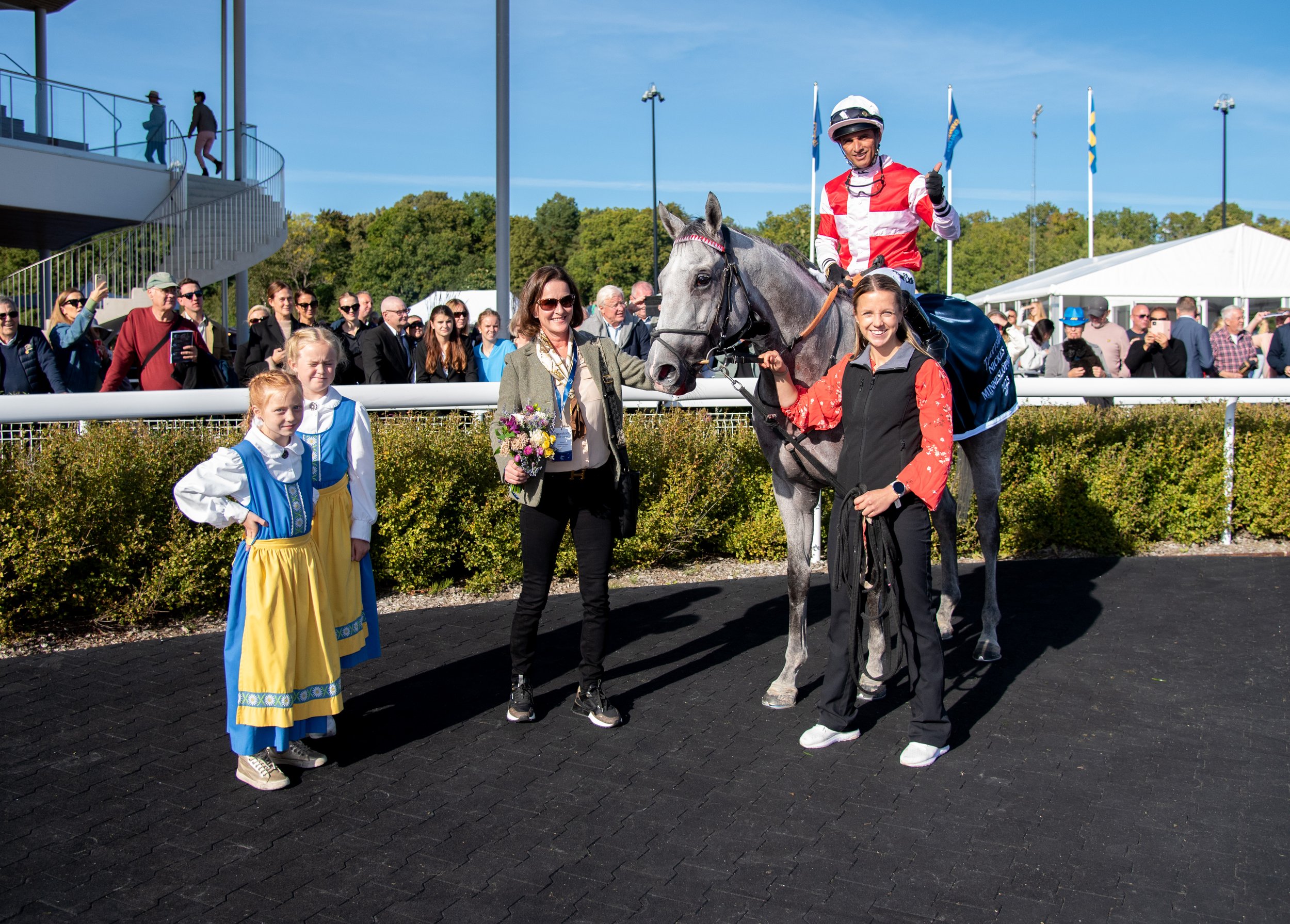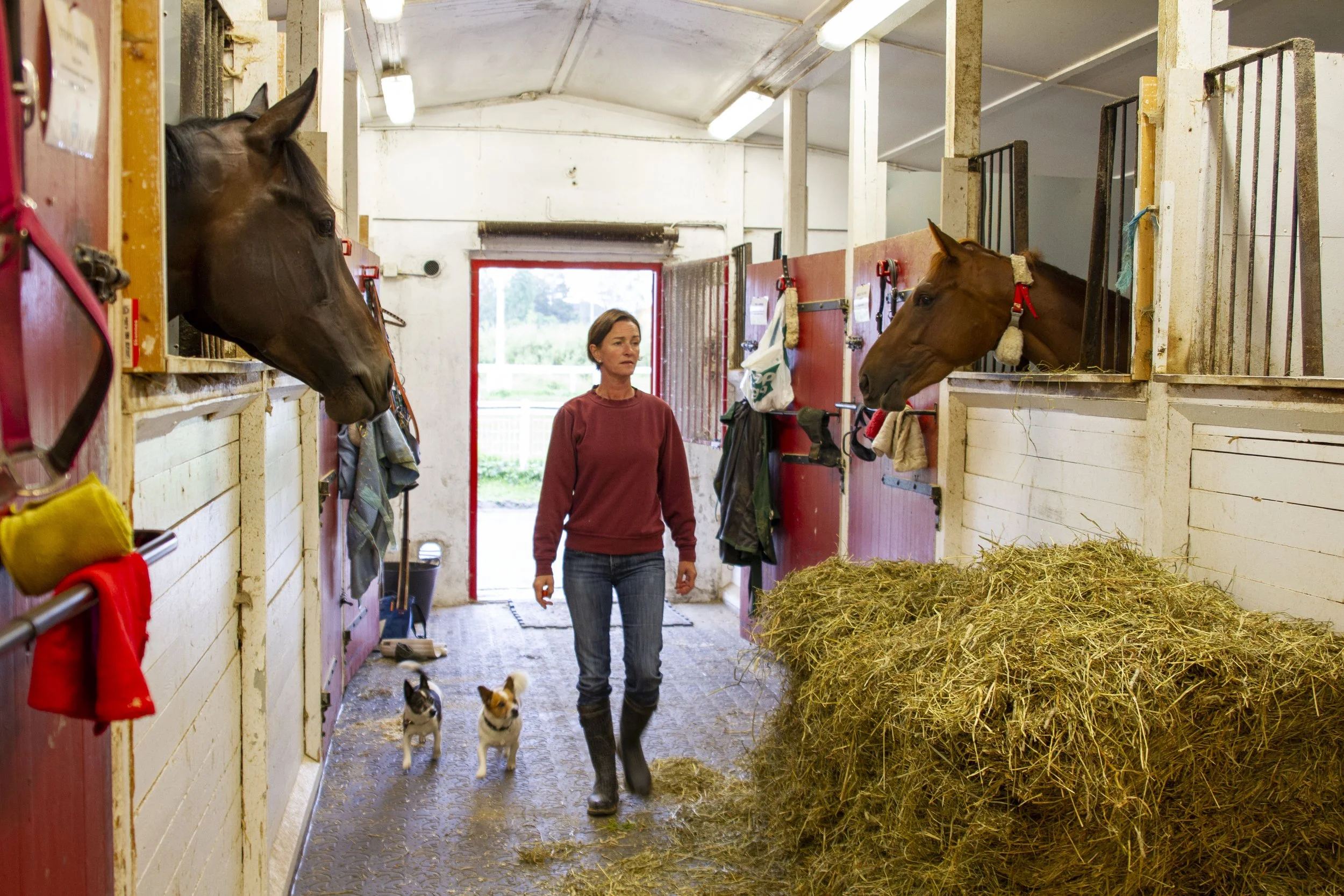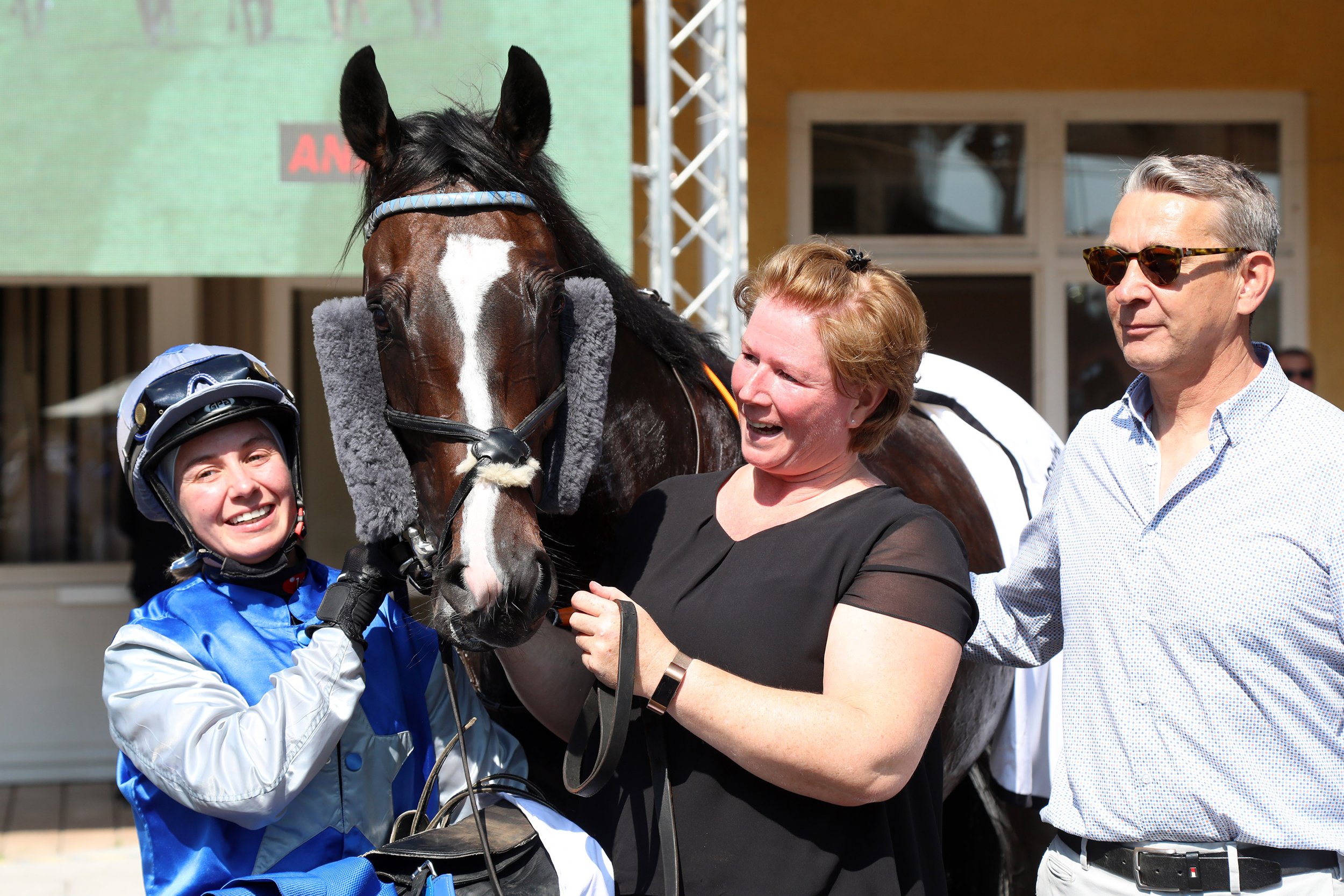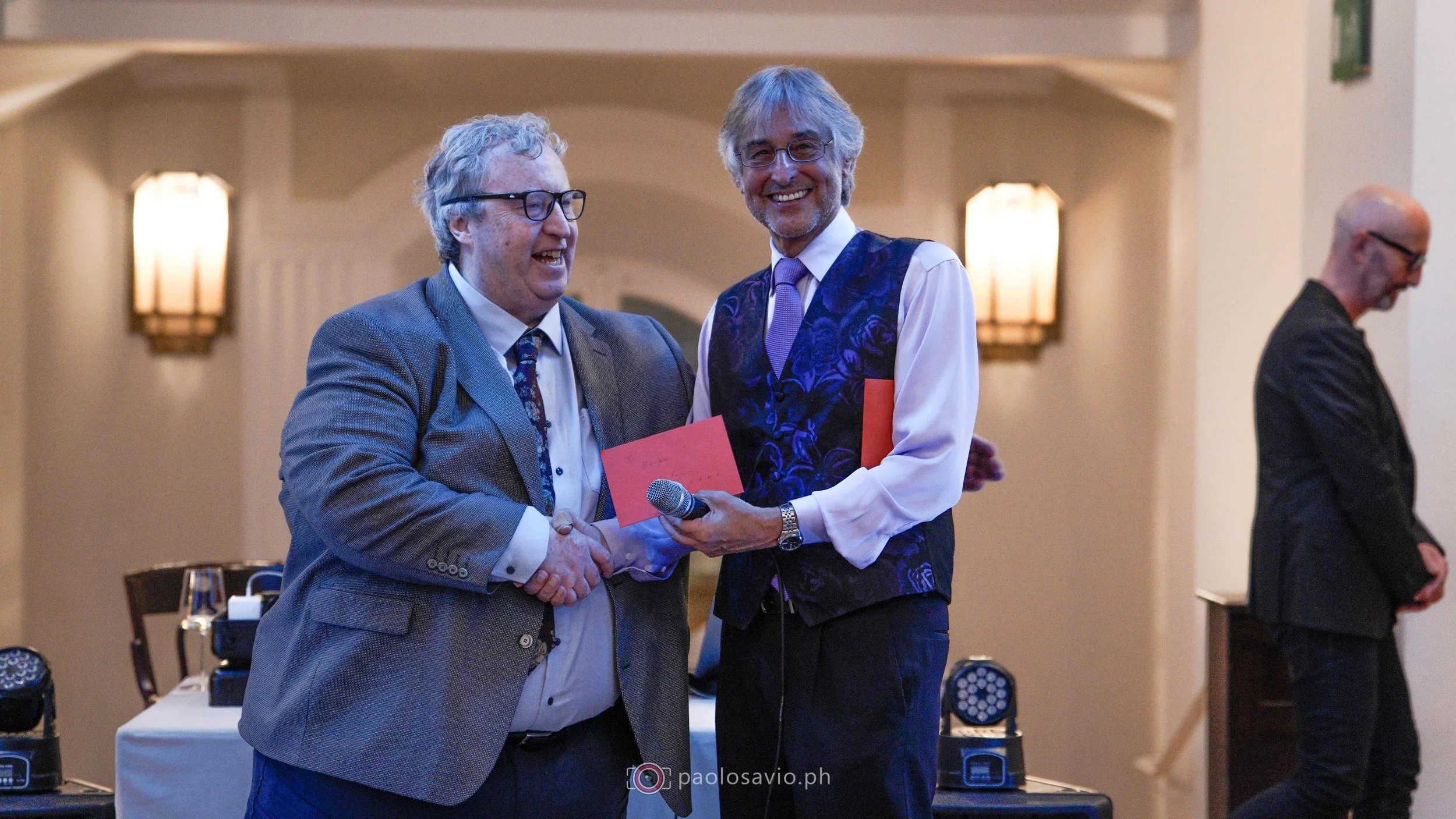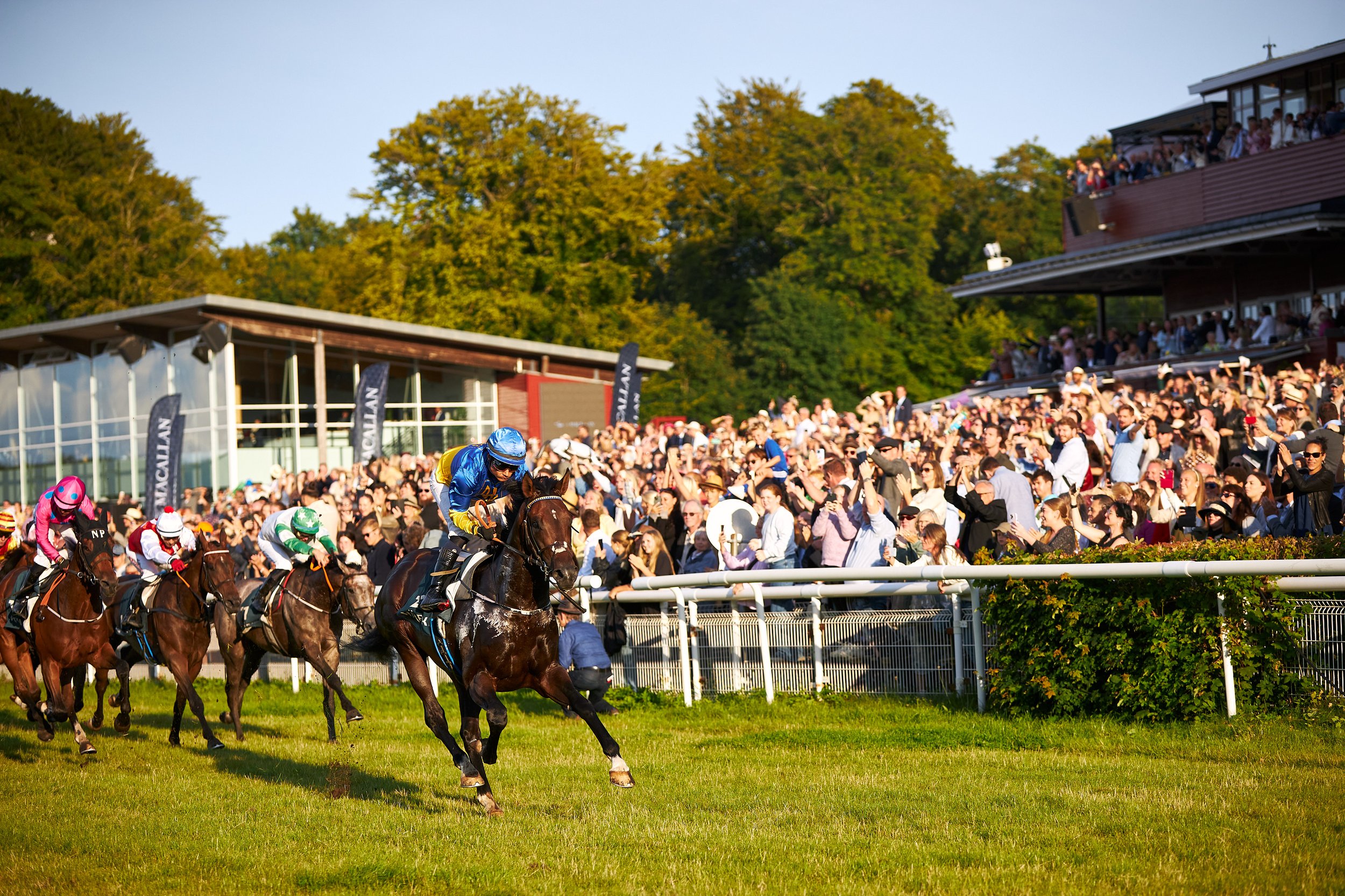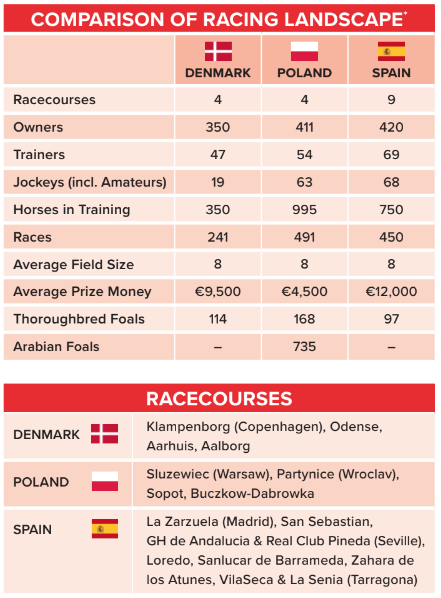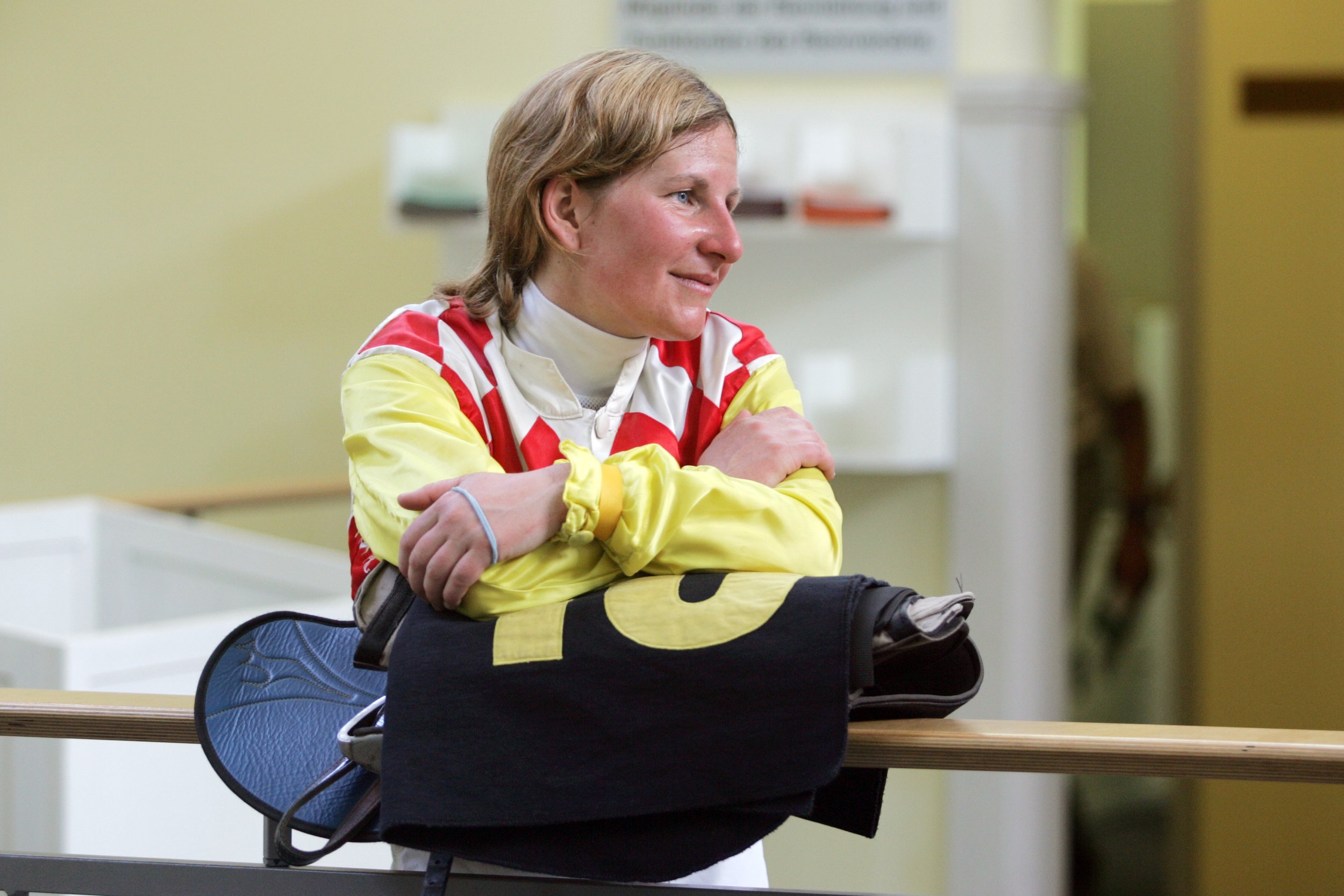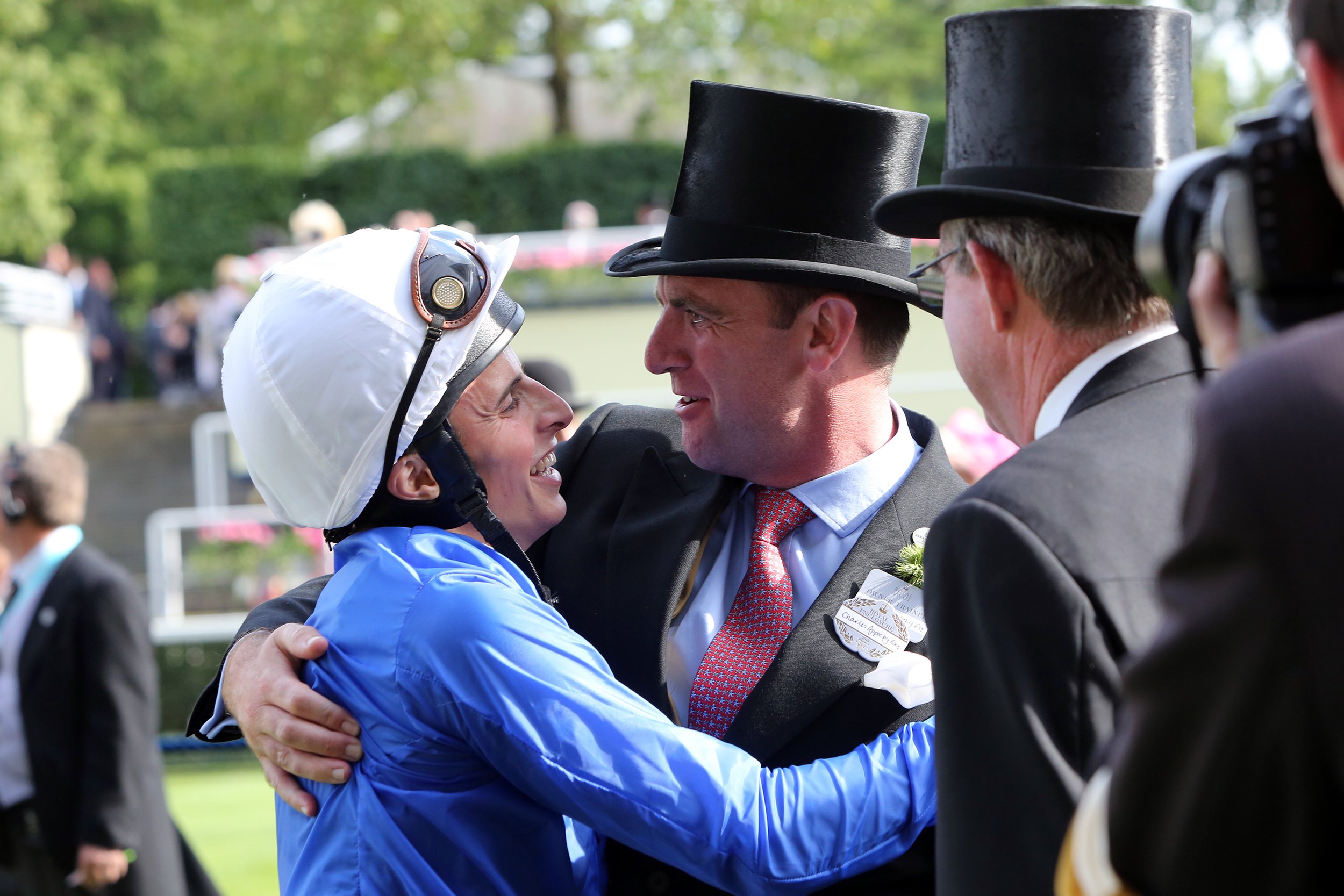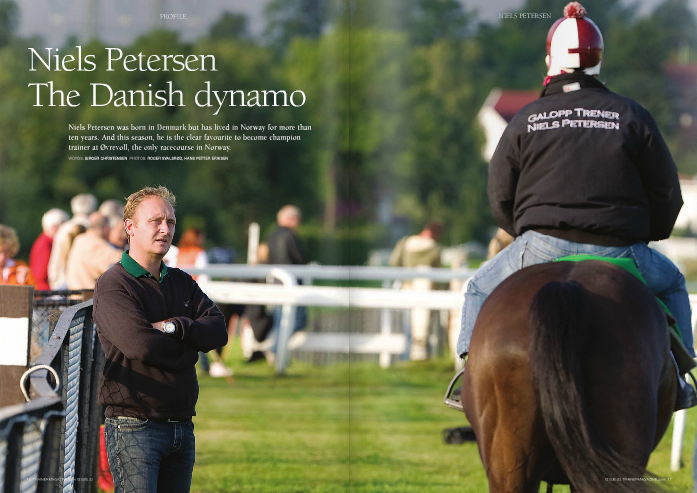The 2025 EMHF AGM and three trainers who topped their respective national championship tables for the first time last year
Last month we published tables of reigning National Trainers’ and Jockeys’ Champions. Here, we get to know two trainers who have become, for the first time, champions in their respective countries.
In Norway, Cathrine Erichsen finally broke a thirteen-year stranglehold which Niels Petersen had held on the title, while in Belgium, it was Nadine Verheyen who prevailed.
CATHRINE ERICHSEN
A lot has happened in Cathrine Erichsen’s career since we profiled her in our October - December issue back in 2019.
For Erichsen, a national rider’s title preceded her entry into the training ranks. “My journey with Thoroughbred horses began when I was introduced to them by some of my friends in secondary school, around the age of 13 or 14. I was instantly captivated by these beautiful creatures and fell in love with them. One of the most memorable moments of my life was riding in my first race at the age of 15; it was an exhilarating experience that gave me a tremendous sense of accomplishment. The following year, in 1986, I achieved my goal of becoming an amateur champion jockey”.
Erichsen’s career change to training was made at the tender age of 24. “When I first obtained my trainer's license, I set a five-year plan with the intention of eventually returning to my college studies in economics and marketing. However, here we are, nearly 30 years later!
“Reflecting on my journey as a trainer, I recognise that it has been quite challenging, particularly as a woman in this field. However, I feel privileged to have received strong support from my owners and to work alongside a reliable and competent team. Their belief in me and their hard work have been crucial to my success. I have always taken a hands-on approach, personally riding my horses, which has been both a healthy and educational experience. I have also been fortunate to meet many friendly people and wonderful horses along the way. Additionally, I've had the opportunity to travel extensively, which has enriched my journey. While this path has proven to be more challenging than I initially expected, I could not imagine my life without it”.
With Øvrevoll being the country’s sole gallop track, Norwegian-based trainers inevitably compete their horses in neighbouring countries, but Erichsen’s foreign forays have extended beyond Sweden and Denmark.
“Every year, I send my horses to compete in races in other Scandinavian countries, and I have also sent them to Germany, France, and Britain. I have won four Derby races and hope to achieve the same success in Sweden. I sent Albaran to Germany for the Hansa Preis, a Group 2 race, where he finished second. He then set a track record in the Scandinavian Open, a Group 3 race in Denmark, where he faced international competitors and won in a photo finish against Yoanna's Pace, the Group 1 St. Leger winner from England. His track record time still stands. Later, in 1999, we participated in the Prix de l'Arc de Triomphe, where we didn’t win but competed against some of the best horses in the world. All the big names were there. That same year, Albaran also won the Stockholm Cup in Sweden and the Scandinavian Open in Denmark”.
Raids to Britain have met with notable success, with Easy Road, winning a Listed race at Doncaster in October 2015 and returning to Ascot a year later to win another Listed event, with the likes of Medicean Man and Sole Power in behind.
“Those trips are, without a doubt, some of the true highlights of my career. Not only did I take the bold step to travel to Britain, but I also succeeded, marking one of the most significant events I have ever experienced. I will never forget when the world renowned jockey, William Buick, mentioned how incredible it was for him to win a race on his new home turf with a horse trained in Norway. Being a guest on the Morning Line show and having the chance to express my joy repeatedly is a memory that many, including myself, will cherish. I vividly remember arriving at Ascot with Easy Road and seeing the Racing Post create a travel map for all the runners that day. We undoubtedly had the longest journey, traveling for days with several stopovers!”
The best horse to have been through Erichsen’s hands was probably, Duca Di Como, a predominantly dirt horse whom Erichsen sent over for the Wokingham two years ago and for whom the Breeders' Cup was once on the cards.
“I bought Duca di Como unseen at the Breeze-Up Sales when he was a two-year-old, based on advice from one of my contacts. Initially, my impression of him was somewhat disappointing - until I saw him working. That’s when I realised that this horse had real potential. He was quite immature and inexperienced, so I chose to wait until he turned three to start him in races. Once we began, he showcased exactly what I had anticipated. I had aspirations for him to compete in the Breeders' Cup. It's still frustrating to think about the opportunity we had to attend the Breeders' Cup with Duca when he was at his best, and we chose not to take that risk. The Wokingham marked the end of Duca's career. He had, quite literally, won everything in Scandinavia multiple times, so trying something new was an exciting challenge. He performed exceptionally well on both grass and dirt, and he still holds track records for milers in Scandinavia”.
So how, after decades of persistence, did Erichsen finally achieve her breakthrough trainers’ title?
“Although my superstar, Duca di Como, was not in his best shape, the rest of my horses stepped up and truly delivered. I had strong performers across all categories, from handicappers to homebreds and quality horses. Each one of them rose to the occasion, even though my horse material is smaller and simpler.
“Racing is a minor sport in Norway, which means that owners do not often reach out to you on their own. As a trainer, connecting with owners is a crucial part of my job, and while it can be time-consuming, it is also quite exciting. My background in college studies in economics and marketing often proves beneficial in this aspect of my work”.
Like most horses in training in Norway, Erichsen’s are trained on the track. Of course, the Norwegian climate poses challenges, but, also, according to Erichsen, offers unique advantages, too. “Based on my experience, training horses during the winter in the beautiful snow that is common in Norway is highly beneficial. Snow can be prepared in various ways to create an excellent footing for the horses. It cools their legs and has a natural give, making it gentle on their joints. In short, snow is advantageous for horses”.
And which jockeys, racetracks and fellow trainers does she hold in the highest esteem?
“Aiden O’Brian is the trainer I admire the most.
“As for racecourses, among the ones I have seen, Ascot and Longchamp stand out the most. I have been fortunate to attend many race meetings around the world, including the Saudi Cup, the Royal Ascot, the German Derby, and various events in Dubai. Unfortunately, I have not yet experienced the Breeders' Cup. However, if I had to choose my favourite among the events I have attended, it would be the Royal Ascot.
“William Buick is undoubtedly the best jockey in the world. I remember when he first arrived at Øvrevoll, so small and eager to ride; all the horses galloped away with him. His tremendous success, competence, and skill make me proud to be Norwegian. The day William won the race for me at Ascot still remains the most unforgettable moment of my career”.
NADINE VERHEYEN
As with Erichsen, Nadine Verheyen’s maiden championship is the culmination of a decades-long training career. In 2005, she secured a licence as a private trainer for the Molenhof Stable, an extensive concern, situated 30kms south-east of Antwerp, whose main focus is on breeding and developing Belgian Warmbloods, primarily for show jumping. She did this with her partner, Wim Van de Poel, whom she had met in 1991, when Wim was an Amateur jockey – her first encounter with Thoroughbreds. Later, they were to become owners and raced at the now closed Flat track at Sterrebeek.
Seeding her fledgling training operation with purchases of horses-in-training from both BBAG and Tattersalls, they also bred Thoroughbreds for a period of time. “Some of the young horses were entrusted to trainer Andreas Löwe and his team in Cologne (Germany)”, she explains.” We had an excellent working relationship with him. There was always mutual respect and a strong focus on the wellbeing of the horses. We learned a great deal from him. And learning never stops, we firmly believe that”.
Verheyen is still based at Molenhof. “Today, we have ideal facilities: stables, meadows, paddocks, a covered horse walker, an indoor arena, and a 1600-meter training track”.
However, due to time constraints, journeys to compete at German and French tracks have diminished, as have their number of horses in training. Which makes last year’s success all the more remarkable. “We owe this above all to the horses, who have remained fit and injury-free, and to a fantastic team that is available day and night. A passionate team, united in pursuit of the same goal and deeply connected to the horses, is the key to success.
“Being 100% professional in the flat racing sport in Belgium is not financially viable today. It is, however, a real asset that Belgian racing still has international value and that we continue to have an all-weather track in Mons and beautiful turf racecourses in Ostend and Waregem”.
Verheyen retains a deep admiration for Lowe, although he is no longer active as a trainer. “He found the perfect balance between caring for the horses, his staff and the owners. Andreas Löwe achieved impressive results, sometimes with rather modest horses, but he always acted with great passion and consistently maintained his belief and trust”.
As for jockeys, “Terence Hellier is definitely one of our favourites. He handles pressure well and has an excellent feel for his horses. It's a pity he no longer holds a jockey license.
We also have tremendous admiration for our Belgian top jockey in France, Christophe Soumillon, not only as a rider but also as a passionate mentor for future jockeys. It's truly impressive how dedicated he is” – a reference to Soumillon’s Pony Academy.
“We are fortunate to have experienced many memorable race days, over the years. The German Baden-Baden (Iffezheim) meetings were our holiday destination for many years. We took as many horses as possible and spent ten days racing at a beautiful racecourse. It was both a vacation and hard work, but we enjoyed every moment of it. In 2009 we enjoyed 4 wins with 2 horses and, two years later, we topped this with 5 wins.
“We also enjoyed numerous victories with Lady Magda and our female amateur jockey Karen Dieltjens, who gave us incredible goosebumps moments both in Ostend and at Waregem Koerse. The highlight of this combination came in 2022, with 5 starts and 5 wins, including the Prix de Prince Rose in Ostend and the Prix Bingoal St Leger in Waregem, which we won for the second year in a row. In 2023 a long break was necessary for Lady Magda, but in 2024 she won the Prix de Prince Rose in Ostend again, which is a unique achievement. No horse has ever won the Prix de Prince Rose twice”.
A third victory might even be on the cards on August 4th for Verheyen’s stable star, who now races in the colours of her amateur rider, Karen Dieltjens. “We hope to participate again this year with Lady Magda and Karen Dieltjens in the Prix de Prince Rose in Ostend and the Prix Bingoal St Leger in Waregem.”
KAVANAGH PRESIDES OVER FINAL EMHF MEETING
At 1.30pm on June 1st 2010 the founding meeting of the European and Mediterranean Horseracing Federation took place in Stockholm, Sweden. The Chair that day, as for the next fifteen years, was Brian Kavanagh, then CEO of Horse Racing Ireland. At 5.00pm on Friday, May 3rd 2025, in Merano, Italy, Kavanagh – now CEO of The Curragh racecourse – drew to a close the first day of this year’s EMHF General Assembly, which was to be his final meeting in charge of the Federation.
Italy's most northerly racecourse, Merano Maia, sits against a backdrop of towering, snow-capped Alpine mountains. Just south of the Austrian border, this area of South Tyrol has a vibe all its own, where German is at least as widely used as Italian. Italy’s premier jumps track, home each September to the Gran Premio Merano, must rank among the world’s most beautifully-situated and several of the delegates revealed that it was on their ‘bucket-list’ of courses to visit.
The meeting saw the re-election of Poland’s Jakub Kasprzak to its nine-strong Executive Council. Sadly, Lebanon’s Associate Membership was suspended, due to the absence of Thoroughbred racing there in recent years. The group received a presentation from the EMHF’s Political Advisor, Cathy McGlynn, on the status of the EU review of its legislation relating to animal welfare in transport and on ongoing efforts to secure free movement for Thoroughbreds being moved for breeding and sales purposes. Commitments were made to hold EMHF Seminars, later this year, on the subjects of Handicapping and Co-Ownership. The General Assembly had been immediately preceded by the second EuroMed Stewards’ Conference, again organised by the British Horseracing Authority.
There was a strong and varied contingent of representatives of relevant commercial organisations, many making return visits, and presentations were made by LockCon, manufacturers of doping control kits, MYLAPS (automated timing technology), Pegasus (horse nutrition and transport) and Equine MediRecord (anti-doping and horse welfare systems) as well as from the International Representative of the Organization of Racing Investigators.
For the first time, much of the second day of business was set aside for group strategic discussions, in which members discussed what they would like to see from the Federation over forthcoming years, as we enter a new era of our development under new Chair, France Galop’s Henri Pouret. These ideas will be considered further by our Executive Council at its next meeting, in Navan, Ireland, in November, before a plan for the future is presented to next year’s General Assembly.
Our Italian hosts, the Ministry of Agriculture and the executive of Maia Racecourse, then treated the group to a dinner in the Restaurant in the Kursaal, the grand hall within the Kurhaus, a famous architectural landmark in the city, at which a presentation was made to Kavanagh in reflection of his enormous contribution to the Federation.
We close this piece with some reflections from our recently departed Chair.
Q: How would you characterise the development of the EMHF, since its inception fifteen years ago?
It has been very satisfying to see the development of the federation over recent years into more than just a networking body between large and small racing jurisdictions in the region (although that is still a very important function). The participation at a senior level from all member countries is a big benefit and has encouraged a structured and consistent approach to areas such as horse welfare, doping control, race planning and grading through the region. The federation plays an active role within the ifha and through its contacts with other industry bodies is working to assist eu policy development in critical areas such as horse transport. The work of paull khan as secretary general is critical in pulling all of this together.
Q: You also held high office – as Vice-Chair for many years – of the global body, the International Federation of Horseracing Authorities. What do you feel are the additional benefits that the regional federations, like the EMHF and Asian Racing Federation, bring to the sport?
I think they are essential to filter IFHA policy decisions down to individual member countries and to ensure a consistent approach both regionally and globally. They are also very important channels to ensure that specific regional issues are properly articulated and addressed by the senior international racing body.
Q: You must hold many memories of visits to EMHF member countries for your annual General Assembly and Executive Council Meetings. Which are the most vivid?
It has been a privilege to visit so many wonderful racing venues throughout the european and mediterranean region and to see at first hand the high quality and wonderful variety of racecourses within the region. It would be wrong to single any one out, but my abiding memory will be of the wonderful people working to promote horse racing throughout the region and the firm and lasting friendships made.
Next year, the EMHF ‘roadshow’ rolls into Porto. Portugal has kindly offered to host what will be the first EMHF meeting in that country. It will take place on July 11th and 12th 2026.
Smaller nations - the challenges facing trainers in Denmark, Poland and Spain
In the last issue, we featured a table of champion trainers and jockeys across Europe, compiled by Slovakia’s Dr Marian Surda. In this one, we have selected three of those champion trainers—those of Denmark, Poland and Spain—and tried to find out a little more about them and what it is like to be at the top of the training tree in their respective countries. While there is plenty of positivity and success to report, the challenges of sustaining viable businesses in the ‘smaller’ racing nations of our region, even for those at the top of their profession, are evident. It is a salutary finding that two of the three are looking to move on from the countries in which they have made their names.
Of our chosen trio, Guillermo Arizkorreta was the most highly ranked (by earnings), finishing 7th of 19 with earnings of €886,250 achieved through 61 winners at a strike rate of 19.3%. Niels Petersen not only finished 9th with his €311,537 in Denmark, but he also finished 8th as champion in Norway, with a further €443,856. And Cornelia ‘Conny’ Fraisl, one of only two females on the list, came in at No 14, earning €131,791 from her 50 wins in Poland.There are many similarities between the three. All happen to be of a similar ‘vintage’, being in their late 40’s or 50’s.
Denmark has the fewest horses in training but has ready access to those trained in neighbouring Sweden and Norway. The number of trainers among whom these horses are divided are roughly comparable, as are the numbers of their owners. There is some disparity in prize money, with Poland some way adrift of the other two countries. None has a thriving thoroughbred breeding industry, producing limited numbers of foals and therefore relying on foreign-bred imports and foreign-trained runners to achieve the near-identical average field sizes of eight runners per race.
Denmark has one thoroughbred-only track (Copenhagen’s Klampenborg) and three dual gallop and trotting courses. In Poland, Sluzewiec—the main track at the country’s capital—is joined by three others, including Wroclav (where most Polish jump races are run) and the seaside track at Sopot. Spain has four traditional tracks, headed by La Zarzuela in Madrid and, in addition, has three beach racecourses and two ‘pop-up’ tracks.
NIELS PETERSEN
Niels Petersen can claim a unique achievement among current European trainers, in that he is Champion Trainer not only in Denmark, but also in Norway. While Petersen was born and raised in Denmark, he has lived in Norway for the past 25 years, from which base he has stewarded a stellar training career. He has earned the title of multiple champion trainer in all three Scandinavian countries, with combined annual prize money often exceeding €1M and peaking at around €1.7M. Over the years, he has garnered 788 winners in Scandinavia, at a strike rate of around 16%.
Petersen is a prolific winner of Scandinavia’s richest race, the Group III Stockholm Cup International. Square de Luynes ran up a hat-trick of wins.from 2019 to 2021, and Bank of Burden was a four-time victor in a long career. “My most consistent horse was probably Bank of Burden, but my best horse has been Square du Luynes. The Racing Post called him ‘Frankel of the Fjords’”!
Asked for his view of the best trainers in Europe, he says, “People like to say it’s a numbers game, and of course it is, and I know they have the firepower; but the way Aiden O’Brien and John Gosden place their horses, and the level they maintain year after year is just amazing and fantastic to watch. And I greatly admire Karl Burke. To have bounced back and actually raised his game, as he has, after all he’s been through…”.
As for the riders: “Frankie Dettori is special, of course, and I think William Buick, whom I know very well, is a fantastic jockey”. And turning to racetracks: “Ascot and Longchamp are absolutely fantastic tracks, and here in Scandinavia, Bro Park is very level and fair”.
Petersen’s move to Norway was by way of circumstance, not planning. Having completed his education and military service, he worked in Baden-Baden, (alongside friends who included jockey William Buick’s father) for a couple of years, before returning to his homeland, where he suffered a serious riding accident. Forced to seek work opportunities which did not involve riding, his knowledge of the German language came in handy, and he was asked to accompany Scandinavian-trained horses when they raced in Germany. There he met a Norwegian trainer who invited Petersen to join him in Norway to help train his jump horses.
Last year and the year before, Petersen operated a satellite yard in Denmark, (just as once he did also in Sweden). Around 15 of his 55 horses were based at Klampenborg racecourse, and in both those years he claimed the Danish championship. However, despite that success, adverse exchange rate movements have led him to abandon the Danish base. “The Danish customers actually preferred to put the horse up with me in Norway. I haven’t lost any clients, and all their horses I have with me in Norway now.”
Petersen is quick to praise the integrated race planning across the Scandinavian nations, making it practicable for trainers to map out campaigns for their horses. So, for example “if you have an outstanding miler, you can target all the big mile races, more or less.”
Securing owners in any one country is challenging enough—how does Petersen approach the task of finding owners in three countries? He is clear that the trainer’s job is not simply to train the horses—the social component is also vitally important. For example, the path to Dubai for its Carnival is a well-trod one—its purpose for Petersen being as much to enrich social relations with and amongst his owners as the pursuit of prize money.
“I’ve got to make people enjoy the hobby I can provide them with. You do sacrifice a lot of time in doing that. But when you’ve sat on the beach and shared a bottle of wine in your swimming trunks, you become better friends!”
The travel and the socialising place a premium on having excellent staff back at base and has been fortunate to have had a long-standing assistant in the business in the shape of his elder sister. “I make sure that my staff are well paid, and I’m strict in observing proper working hours. It has become more difficult to find good staff, but word of mouth has ensured we have an excellent team, including a number from South America”.
Petersen has noticed a reduction in horses in training in all three countries. “I’m a bit pessimistic as to the future of racing here, especially in Norway, because our government is not supporting the industry at all. It classifies it as a hobby and, unlike in Sweden and Denmark and elsewhere, you cannot own horses as part of a business. It means owners have to pay 25% VAT on top of imports, which they can’t get back.”
Dubai’s allure is, of course, all the greater in the contrast it provides to the long, harsh Scandinavian winters. Petersen rues the fact that, from November to April, the Scandinavian climate renders virtually impossible the effective preparation of horses and, despite his huge success there, he has an eye out for opportunities abroad. “I would like to say I’m not looking for something outside, but I am. I live and breathe Scandinavian racing, but do I see myself here in five years’ time? I don’t think so. I don't see myself being here in five years’ time. I'm only 51 years old—not even at my peak—and I want the opportunity to challenge myself where I know I should be: on the bigger international scene”.
Until then, Scandinavia has given Petersen many special memories. What was his best day? “In Denmark, on Derby Day 2021, I had runners in seven races, and I won all seven of them!” If Square de Luynes was ‘Frankel of the Fjords’, then, after that ‘magnificent seven’, one could almost be forgiven for dubbing Niels Petersen ‘Frankie of the Fjords’.
CONNY FRAISL
Fraisl’s rise to the top in Poland has been meteoric. Her first year with a public trainer’s licence was as recent as 2020, when, with 44 winners, she finished second in the trainers’ table. Two years later, she was crowned Champion, with 50 winners. Fraisl is alone among our trio in concentrating almost exclusively on Arabian, rather than thoroughbred racing.
“I was born in beautiful Salzburg, Austria”, she explains. “My grandparents had a little farm and, when I was three, my dad bought me my first pony. It was a ‘typical’ stubborn Shetland Pony; and once I’d landed on the ground several times, I asked my dad to ‘sell this pony and buy me a guinea pig’!”
But the lure of riding returned a decade later. “Close to the place I lived, there was a training stable for trotters where I spent every free afternoon, all my holidays from the age of 13. Racing always was fascinating for me. Flat racing In particular but, due to the fact that there was no flat racing stable in my area, I stayed the next seven years with trotters. But I always had an eye on flat racing and, in 1996, when I moved from Salzburg to Vienna, I was finally close to a racetrack where regular flat races were held. So, I made contact with one of the trainers, started to ride regularly in daily training there, gained my amateur licence and bought my first own racehorse.”
“I had the possibility of riding work in Florida for several weeks, and I could learn a lot about starting young horses there. During my earlier days in the trotting stable, I learned a lot about intensity of training, interval training, feeding and the general needs of racehorses”.
As an amateur, Fraisl notched up around 25 winners in Austria and Hungary, where she rode for two seasons for different trainers. Turning professional in 2006, she has amassed 208 winners in the saddle to date, riding in countries as far afield as Malaysia.
For her training career, Fraisl moved to Poland, her then-partner’s homeland, where she set up a private breeding and training facility in Strzegom, not far from Wroclav. “At the beginning, we had in training only homebred horses, thoroughbreds. Step by step, one by one, came some Arabians from Austria, Germany, Sweden.... and when they started to win more and more races. Owners from different countries recognised the job we were doing and sent us more and more Arabian horses to be trained in Poland. Today, she has some 80 boxes and 40 places for youngstock. She is an advocate of turnout for horses’ well-being. “Twenty-five huge grass paddocks can be used all year round and all of our horses—including the racehorses—enjoy several hours outside every day. This is the most positive aspect for mental health. We also have an indoor arena and a horse walker as well as many possibilities to ride out into fields and forest to create the most individual training for our horses as possible”.
These days, Fraisl continues to ride out for nearly all the lots. “This is the best possibility for me to see how the horses in training work, how they behave—simply to ‘feel’ them”.
However, in Fraisl, we find another champion trainer wanting to move on from the country of their triumphs. “Actually we are dramatically reducing the number of our horses, and we are not accepting new horses and owners. The reason is that I am leaving Poland soon and will stop my job as a trainer here”.
Fraisl cites a multitude of reasons for this bombshell decision which, she says, she has taken after lengthy consideration. “The number of foreign Arabian horses—as we mainly have them in training—is also getting smaller and smaller. This means that we are forced to enter three, four or five horses from our stable together in one race, or that race will be cancelled. This makes no sense for us and our owners any more”.
Stagnant prize money and rising costs (of staff, transport, feed, bedding and veterinary and blacksmith services) are another factor. In addition, “there is a big lack of work riders. Most trainers work with a handful of enthusiastic amateurs, mainly young girls, who come to ride some lots before school or study or during holidays”. Fraisl also rues the talent drain of the best jockeys in Poland to other countries. She claims that drug and alcohol misuse is a real issue amongst riders and also that black-economy practices are common in the capital, with staff being employed without legal papers or insurance. “We have all our staff employed on a legal basis, and this is why we are the most expensive stable in Poland. We are already tired [of] explaining to the potential new owners why the prices of others are much lower—that's why we finally decided to close our training stable”.
These points were put to the Polish Jockey Club (PJC) racing secretary and the EMHF executive council member, Jakub Kasprzak. Kasprzak points to the fact that Poland is not alone in facing economic challenges, with high inflation being experienced generally across the continent. “It is true that prize money has not risen for some years, but it still compares favourably with that in, for example, Czechia or Slovakia. We are currently trying to support breeders and owners of Polish-bred horses. We have put in place a five-year programme to help this group of people. Ms Fraisl’s yard has 95% foreign-bred horses, so she is unable to participate in that programme. We have been paying transport only to horses to travel to Sopot (just four days’ racing per year) because there are no horses in training within 100km of that racecourse.”
“It is true that Polish riders, of all levels of ability, will often seek happiness abroad. But a shortage of racing staff is something that is being experienced throughout Europe. We are now seeing many staff coming from countries such as Kyrgyzstan and Kazakhstan. However, I don’t recognise her point about insurance and illegal workers. Every rider MUST have official insurance to be licenced. We at the PJC are very exacting about it. And as to drug and alcohol problems, every rider has a medical control before the start of a race. If the medical officer sees anything incorrect, he will report it to the stewards. Two years ago, one rider was suspended for one year for being drunk on race day”.
Where will Fraisl relocate to? “Time will tell. I hope to find a nice place where I can continue my work with Arabian horses.”
Fraisl has not been averse to sending horses abroad to compete ‘whenever it makes sense’. Indeed it has been the forays abroad that have provided her with her most treasured racing memories. “As key moments, I would mention the experience [of taking] part and finishing fifth in the UAE President Cup - UK Derby in Doncaster this year with Bahwan and especially our first Group winner last year in Jägersro, Sweden. For me as a trainer, this was the first Group race abroad. For our young stable jockey it was the first big chance to ride a Group race and show his talent abroad so we said ‘let's go and try’. We had no idea how the colt would do on a dirt track and without the whip (in accordance with the rules in Sweden). In the event, it was the first Group win for me as trainer, for our jockey, and for the breeder....it was an unforgettable day for all of us”.
GUILLERMO ARIZKORRETA
One man has enjoyed a stranglehold on the Trainers’ Championship in Spain for over a decade. Guillermo Arizkorreta first topped the table in 2012 and has remained there ever since.
By contrast with the other featured trainers, Arizkorreta trains at shared facilities, with some 25 others, at the La Zarzuela racetrack, very close to Madrid. It helps contain costs and has in turn contributed to the fact that Arizkorreta’s owners have enjoyed an enviable return on their annual costs, of over 75%. “It is very easy for the trainer. The owner pays €200/month to the racecourse, and it includes stabling, water supply, electricity, use of gallops, etc. Overall, having a horse in the yard costs around €1500/month, all included. It means that it is not that difficult to cover the cost of having a racehorse. On average, my horses have earned €13.500/year since I started”.
His operation supports some 70 horses in training and a workforce of around 25. “We have very nice staff, from many countries: Germany, Chile, Czech Republic, Italy, Nicaragua, Bolivia. As everywhere, there is a shortage, and it is not easy to find good riders. We have around 17 full-timers who work approximately 40 hours a week, a couple of part-timers, and some jockeys who are self-employed. The staff that work full-time work one weekend in two and the same for the evening stables. The basic wage for a full-time rider is around €19.000/year”.
“I started in a pony club in Oiartzun (close to San Sebastian) which was owned by a racehorse owner. There I met (four-time French Champion jockey) Ioritz Mendizabal, who had a keen interest in racing; and we started to ride racehorses in our local track in San Sebastian. From then on, I started following Spanish racing, and afterwards I started to follow racing and breeding around the globe, which became my passion”.
Arizkorreta singles out three key events in his rise to the top. “First, being able to compete in the FEGENTRI series as an amateur rider opened my eyes, and I was lucky to ride in many countries. Secondly, after finishing my degree, I spent nearly six years working as [an] assistant in the UK to Mr Cumani and in France to Mr Laffon Parias; and I learned a lot with them.
“Lastly, Madrid racecourse was closed between 1996 and 2005, and I was lucky to be ready to start my career at the same time as the racecourse reopened. I was known as an amateur rider in Spain, and all the background from my experience abroad helped me a lot to get some clients in very exciting times”.
“We have won 878 races from 4,450 runners. In Spain, we have won all the major races and probably our biggest achievement abroad was to win a Gp3 and a Gp2 on the same weekend in Baden Baden in 2021”.
Loyal support from some of the country’s biggest owners has been a hallmark of Arizkorreta’s career. “I have a good bunch of owners. The majority of them have been with the yard for a long time. At the moment, we have around 20 different ownership entities—33% sole ownership and the rest partnerships. The majority of them used to come racing when they were children and have a good knowledge of the sport”.
Arizkorreta has not been shy of campaigning his horses abroad and has reaped healthy rewards, capped by that dual Group-winning day in Germany. “Since I started, I have always tried to race as much as possible abroad. We have had 112 winners abroad—mainly in France, but we have also won in Dubai, Germany, Morocco and Switzerland; and we have had runners in Saudi, Sweden, UK, and Italy”.
“I feel we have done pretty well abroad, and in the right races, our horses are usually competitive”.
The trainer has much that is positive to say about racing in his country. “Madrid Racecourse is our ‘shield’, classified, as it is, as a monument. It is a fabulous racecourse, with lovely stands, a good turf track and a good crowd of people every meeting. It is very close to the city centre and is a track definitely worth visiting. Prize money could be better for the big races but in general is good, especially for the low-grade races. Being close to France helps us find suitable races for some horses”.
As to what could be improved, Arizkorreta would welcome improved planning of the race programme and greater unity between trainers, jockeys, and owners to “push in the same direction and to improve the basics of our industry”. And financial structures also mean that there is not the opportunity to access horse walkers or equine swimming pools.
All in all for Arizkorreta, the future, if not stellar, looks stable. “I think in five years’ time we will be in a similar position. Things could be much better but, realistically, with politicians not giving us the tools to develop the betting and our industry; it is hard to imagine an improvement in the short term. We need them to make a long-term plan for racing and breeding and to consider it as an industry that can create wealth and employment in many areas. Since 2005, the ruling government has helped us with prize money, which covers nearly all the races run in the year; and I see no reason why it should change, especially in Madrid.
“We have some lovely racecourses, which are always attended by a good crowd. In our biggest racecourse in Madrid, the weather is usually lovely, and it is becoming very popular in the city. There is scope to improve in many areas, and I can see it being one of the nicest racecourses in Europe. San Sebastian needs more support from the local government, but it is a historic racecourse in an amazing city. And I hope Mijas racecourse will reopen at some point”!
It was heartening to find that at least one of our ‘smaller nations’ champion trainers shows no signs of wishing to leave the country.
European champion trainers and jockeys
Article by Paull Khan
These tables of the reigning champion jockeys and trainers in a selection of European countries, as measured by the domestic 2022 earnings of the horses they trained or rode, were submitted by the doyen of Central European racing, Dr Marian Surda. Surda is secretary-general of KMET—an association of the Racing Authorities of Slovakia, Hungary, Poland, Czech Republic and Austria. While this column cannot vouch for the accuracy of the figures, it can attest to Surda’s long-held commitment to promoting and documenting racing in the Central European region.
Placing, within single tables, the achievements of the top trainers and jockeys in these nineteen countries paints a fascinating picture of the patchwork of our continent’s racing; and it causes many a raised eyebrow.
There may be few surprises at the top of the table—although readers might not have expected the British champion to have achieved greater earnings than his French counterpart, given the considerable disparity in prize money levels in the two countries, in favour of France. But the 1,013 starts of Italian champ Alduino Botti, almost twice the number of his nearest challenger on this measure, stands out as being impressive, indeed. Alduino, together with his brother, Giuseppe, has been a perennial champion in his homeland, following a very successful riding career. They are but part of a remarkable dynasty. Son of trainer and rider Edmondo Botti, Alduino has sired trainers Marco and Stefano, while Giuseppe’s two sons, Alessandro and Endo, also joined the training ranks.
The first name on the list, which may be unknown to the majority of readers is that of the Turkish champion, Ibrahim Bekirogullari, in 6th place. Bekirogullari trains mostly in Ankara and has charge of around 80 horses. His haul last year included 11 domestic group races, and he has been the top money-winner in Turkey for the past five years.
A unique achievement is that of Niels Petersen, the only trainer or jockey to top the table in more than one country—Norway and Denmark. A Dane, living in Norway, Petersen has in the past operated satellite yards not only in Denmark but also in Sweden, in which country he has also enjoyed considerable success.
Austria, once a proud racing nation, provides a sad footnote. The Austrian Derby was first run in 1868 at Vienna’s Freudenau racecourse, whose art nouveau grandstands were some of the most stylish in the world and where the first electronic timing of races took place. Today, just four gallop races are run during the course of the whole year. To become champion there, Sarah Steinberg, the German-licenced trainer, picked up just €1,000 as her 10% trainer’s share of the €10,000 earned by Anonymous, the winner of the country’s top race.
On a lighter note… who knew that the average European champion trainer has a strike rate of 25%, earnings of €1.4M and is 54 years of age!
Trainer of the Quarter - Niels Petersen
The TRM Trainer of the Quarter award has been won by Niels Petersen. Petersen and his team will receive a selection of products from the internationally acclaimed range of TRM supplements as well as a bottle of fine Irish whiskey.
By Oscar Yeadon
As one of Scandinavia’s leading trainers since taking out his licence in 1998, and a multiple champion trainer, few would have been surprised to see the Niels Petersen-trained Square De Luynes prevail in the latest renewal of the Norsk Derby at Ovrevoll on 26th August.
After all, this was the Ovrevoll-based trainer’s fifth success in the race, but while Petersen had long held Square De Luynes in high regard, the route to the Norsk Derby hadn’t been the most straightforward and came after a year of planning.
“We knew we had him in outstanding condition for the Norsk Derby, so the result wasn’t a complete surprise. He had had a fetlock operation at two, which meant we had a quiet winter last year. It was then when we decided to aim him for the Norsk Derby.
“We had fantastic weather this summer but the downside of this was that the ground was fast, fast, fast everywhere, so he went to the Guineas for his seasonal debut, and finished an unlucky second.
“I wanted to try him over distance before the Norsk Derby, so we sent him to the Swedish Derby, where maybe the ground didn’t suit him and he finished sixth. The race served its purpose and left five or six weeks until his target race.”
Square De Luynes finished behind his winning stablemate Nordic Defense in the Swedish Derby, but tables were turned when the pair met each other in the Norwegian equivalent a month later.
“On the day, we were confident [about Square De Luynes]”, remembers Petersen. “The race panned out as we thought it might, and Nordic Defense wasn’t fluent on Ovrevoll’s undulating ground.”
So what next for Square De Luynes? “He’s a wonderful horse if maybe a little fragile, and we decided in mid-September that we should put him away now, and build him up for next season. We are going to think about Dubai this winter. He’s an unexposed type and can go further. As he’s also still unfurnished, a winter with the sun on his back could be to his advantage.”
Square De Luynes’ Norsk Derby victory was backed up on the same card by that of his stablemate, Our Last Summer, who won the Group 3 Marit Sveaas Minnelop. As well as providing Petersen with a fourth winner in the race, the trainer could be having a busy autumn on the international scene as Our Last Summer could head to the Canadian International at Woodbine if - at the time of writing - he wins or runs well in the Stockholm Cup.
Further ahead, Petersen is also looking towards 2019. “We have some lovely two-year-olds, including a couple of really nice types, by Sea The Moon and Siyouni, so we look look really good for next year.”
Factor in the likes of Square De Luynes and Our Last Summer with the rest of Petersen’s 50-strong string and it’s easy to see the trainer adding to his current tally of 10 Scandinavian derbies.
TO READ MORE —
BUY THIS ISSUE IN PRINT OR DOWNLOAD -
WHY NOT SUBSCRIBE?
DON'T MISS OUT AND SUBSCRIBE TO RECEIVE THE NEXT FOUR ISSUES!
Niels Petersen - the Danish dynamo
CLICK ON IMAGE TO READ ARTICLE
(European Trainer - issue 35 - Autumn 2011)


